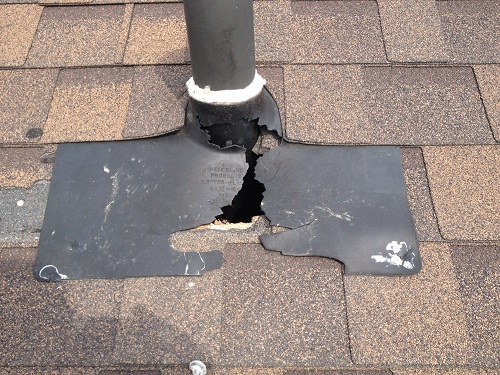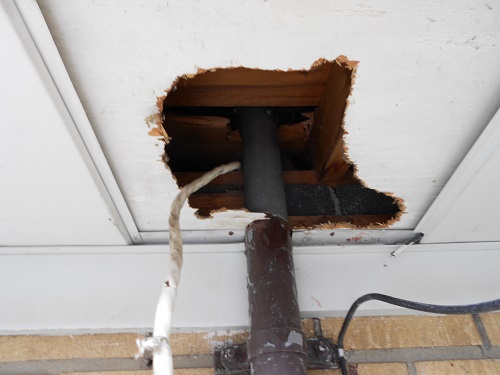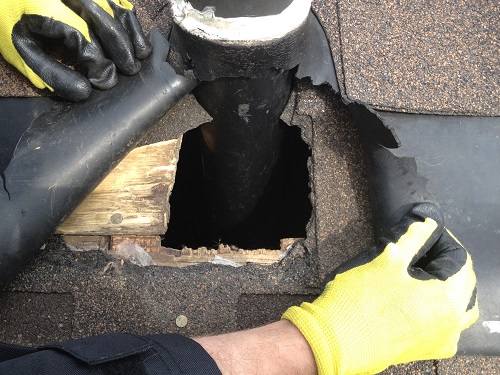
Raccoon Facts
Raccoons are highly intelligent and curious creatures, but they can also be a nuisance to any homeowner. These nocturnal mammals can destroy gardens, make a mess by tipping over garbage cans, and can cause structural damage in search of food. On this page, you will learn general raccoon facts and how to identify raccoon damage.

Scientific Name
Procyon lotor
Average Size
12" tall; 24-38" long; 14-23 lbs.
Average Lifespan in the Wild
2-3 years
Identifying Features
Gray fur with a black mask and 4-7 black rings around its tail; pointy snout with a black nose; dexterous front paws.
Raccoon Habitat
Traditionally, raccoons prefer heavily wooded areas with access to trees, water and abundant vegetation. There, they make their dens in the hollow parts of trees as well as abandoned burrows, traveling up to 18 miles to forage for food.
Raccoons are extremely adaptable. They are often found in suburban and urban areas, making their homes in man-made structures like attics, sewers, barns and sheds. In urban areas, raccoons tend to stay closer to their dens with a range of only about 1 mile, depending on their age and sex.
Though previously thought to be solitary, there is now evidence that raccoons engage in gender-specific social behavior. Related females often share a common area, while unrelated males live together in groups of up to four animals to maintain their positions against foreign males during the mating season, and other potential invaders. Home range sizes vary anywhere from 3 hectares (7.4 acres) for females in cities to 5,000 hectares (12,000 acres) for males in prairies. After a gestation period of about 65 days, two to five young, known as "kits", are born in spring. The kits are subsequently raised by their mother until dispersal in late fall. Although captive raccoons have been known to live over 20 years, their life expectancy in the wild is only 1.8 to 3.1 years. In many areas, hunting and vehicular injury are the two most common causes of death.
Raccoon Behavior

Activity
Nocturnal in nature, raccoons are mostly active at nighttime. They are most active in spring, summer and fall, and will sleep in their dens for most of the winter.
Reproduction
Reproduction begins in late winter. Females, or sows, usually give birth to 1-6 baby kits in April or May. Mothers are very protective of their young until they separate after about a year.
Social Interaction
Raccoons are independent after 12-14 months of age. Adults live in loose knit communities of 4 - 5 raccoons for better protection against predators.
Communication
Raccoons communicate with each other using over 200 different sounds and 12-15 different calls.
Skills
Raccoons possess amazing dexterity that gives them the ability to open doors, jars, bottles and latches. They are also great climbers, which allows them to better access food and shelter.
Raccoon Sounds

Raccoon

Baby Raccoon

Other Sounds
Identify a Raccoon
Since raccoons are nocturnal creatures, property owners may not be aware of their presence until damage has already been done. One of the best ways to identify the presence of raccoons is to look for the tracks they leave behind.
Raccoons will eat almost anything, but are particularly fond of creatures found in water—clams, crayfish, frogs, fish, and snails. Raccoons also eat insects, slugs, dead animals, birds and bird eggs, as well as fruits, vegetables, nuts, and seeds. Around humans, raccoons often eat garbage and pet food.
Though trash is trash to us, it can be a meal or two for some curious and hungry wild animals. Notorious for making a snack of whatever you've thrown out in your trash can, raccoons will stop at very little to get their treats out of your trash.
When raccoons take up residence inside an attic they are capable of causing tremendous amounts of property damage. In very little time, a family of raccoons is capable of destroying your insulation and filling your attic with harmful and odorous urine and feces.
Raccoons track through mud near water sources, like streams or lakes. As such, muddy raccoon footprints are often found on household surfaces like tabletops or cars. Forepaw tracks most resemble tiny human handprints, with five fingers splayed out from the palm. Hind paw tracks look similar but have elongated heels that sink deep into the ground because raccoons carry more weight in their back ends. Their unusual gait places the fore and hind paw tracks side-by-side or slightly offset from each other.







